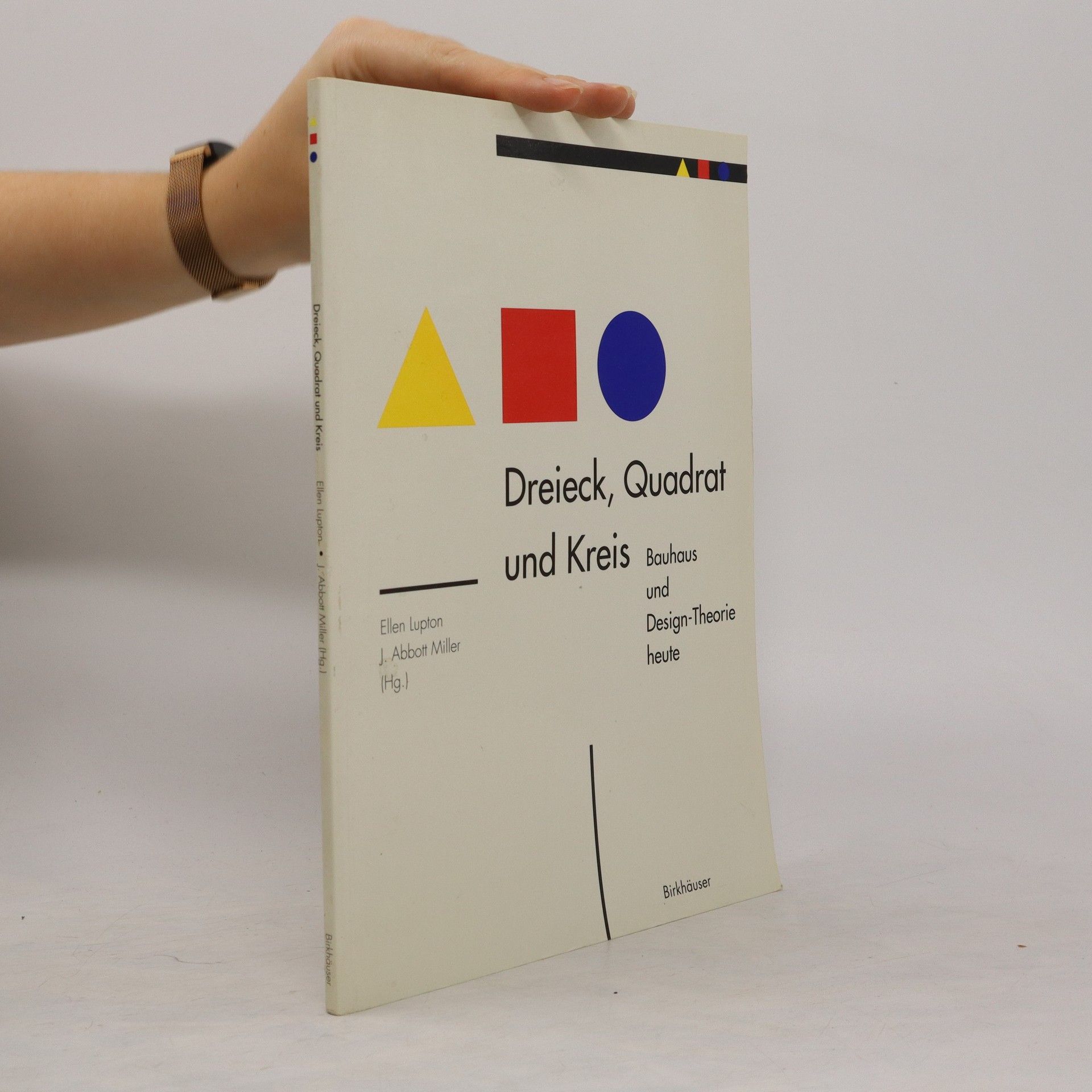Dreieck, Quadrat und Kreis
- 66 Seiten
- 3 Lesestunden
Elemetar-Schule -- Friedrich Fröbel -- Weimar -- Herbert Bayer, Universal-Schrift -- Psychoanalyse und Geometrie -- Fraktale Geometrie






Elemetar-Schule -- Friedrich Fröbel -- Weimar -- Herbert Bayer, Universal-Schrift -- Psychoanalyse und Geometrie -- Fraktale Geometrie
Wie Buchstaben auf einer leeren Seite a " oder einem Bildschirm a " angeordnet werden, ist die grundlegenste Herausforderung fA1/4r einen Grafiker. Welche Schrift soll benutzt werden? Wie groA soll sie sein? Wie werden die Buchstaben, WArter und Abschnitte ausgerichtet, wie groA sind die AbstAnde, wie werden sie geordnet und geformt? Dieses Werk von Ellen Lupton, eine der fA1/4hrenden Desgindozentinnen und -historikerinnen, hilft dem Leser, seine typografischen FAhigkeiten zu entdecken, auszubauen oder aufzufrischen. Mit Schrift denken ist unterteilt in drei Kapitel: Buchstabe, Text, Raster. Jedes Kapitel beginnt mit einem leicht verstAndlichen Essay der historische, technologische und theoretische Konzepte erlAutert und dem praktische Aoebungen folgen. Zum Schluss der Kapitel zeigen Beispiele aus den Werken fA1/4hrender FachkrAfte, wie die kreativen MAglichkeiten angewandt werden und welche AVerbrechen mit SchriftA nicht begangen werden dA1/4rfen. Mit Schrift denken ist ein Band der Erfolgsreihe Design Briefs.
This book offers a comprehensive exploration of Bauhaus typography and print design, tracing its evolution from expressive beginnings to modern functionalism. Celebrated for its bold typefaces and innovative layouts, the Bauhaus has profoundly influenced 20th-century graphic design and continues to define modern visual aesthetics.
A Fast Company “Most Important Books for Designers to Read Right Now” Discover how the principles of human-centered design can be applied to real-world health challenges in dozens of illustrated examples—from drug packaging and cancer detection devices to post-COVID-19 innovations. Written by pioneers in the field—Bon Ku, a physician leader in innovative health design, and Ellen Lupton, an award-winning graphic designer—this book outlines the fundamentals of design thinking and highlights important products, prototypes, and research in health design. This revised and expanded edition describes innovations developed in response to the COVID-19 crisis, including an intensive care unit in a shipping container, a rolling cart with intubation equipment, and a mask brace that gives a surgical mask a tighter seal. Graphics by Lupton bring these ideas to life. The authors also explore the special overlap of health care and the creative process, describing the development of such products and services as a credit card–sized device that allows patients to generate their own electrocardiograms; a mask designed to be worn with a hijab; improved emergency room signage; and a map of racial disparities and COVID-19. Health Design Thinking is an essential volume for health care providers, educators, patients, and designers who seek to create better experiences and improved health outcomes for individuals and communities.
A study of portrait miniatures in enamel from the Gilbert Collection. It proceeds from 17th-century portrait miniatures by German, French and Swiss enamelists to late-19th-century examples by Henry Bone and other English artists. It includes discussion of their techniques and tools. schovat popis
"100 traditional yet surprisingly modern recipes from the far northern corners of Russia, featuring ingredients and dishes that young Russians are rediscovering as part of their heritage. Russian cookbooks tend to focus on the food that was imported from France in the nineteenth century or the impoverished food of the Soviet era. Beyond the North Wind explores the true heart of Russian food, a cuisine that celebrates whole grains, preserved and fermented foods, and straightforward but robust flavors. Recipes for a dazzling array of pickles and preserves, infused vodkas, homemade dairy products such as farmers cheese and cultured butter, puff pastry hand pies stuffed with mushrooms and fish, and seasonal vegetable soups showcase Russian foods that are organic and honest--many of them old dishes that feel new again in their elegant minimalism. Despite the country's harsh climate, this surprisingly sophisticated cuisine has an incredible depth of flavor to offer in dishes like Braised Cod with Horseradish, Roast Lamb with Kasha, Black Currant Cheesecake, and so many more. This home-style cookbook with a strong sense of place and knack for storytelling brings to life a rarely seen portrait of Russia, its people, and its palate--with 100 recipes, gorgeous photography, and essays on the little-known culinary history of this fascinating and wild part of the world"-- Provided by publisher
"Critical essays link theories about feminism, racism, inclusion, and binary thinking to design principles and practices. Type specimens, biographies, and interviews showcase the work and ideas of people marginalized by sexism, racism, and/or ableism"--
"According to Georgian legend, God took a supper break while creating the world. He became so involved with his meal that he inadvertently tripped over the high peaks of the Caucasus, spilling his food onto the land below. The land blessed by heaven's table scraps became Georgia. Nestled in the Caucasus mountain range between the Black and Caspian seas, the Republic of Georgia is as beautiful as it is bountiful. The unique geography of the land, which includes both alpine and subtropical zones, has created an enviable culinary tradition. Winner of the IACP Julia Child Award for Cookbook of the Year, The Georgian Feast introduced a generation of cooks to the rich and robust cuisine and culture of Georgia. This revised and expanded anniversary edition features new photography, recipes, and an essay from celebrated wine writer Alice Feiring."
Celebrated food scholar Darra Goldstein takes readers on a vivid tour of history and culture through Russian cuisine. The Kingdom of Rye unearths the foods and flavors of the Russian land. Preeminent food studies scholar Darra Goldstein offers readers a concise, engaging, and gorgeously crafted story of Russian cuisine and culture. This story demonstrates how national identity is revealed through food--and how people know who they are by what they eat together. The Kingdom of Rye examines the Russians' ingenuity in overcoming hunger, a difficult climate, and a history of political hardship while deciphering Russia's social structures from within. This is a domestic history of Russian food that serves up a deeper history, demonstrating that the wooden spoon is mightier than the scepter.